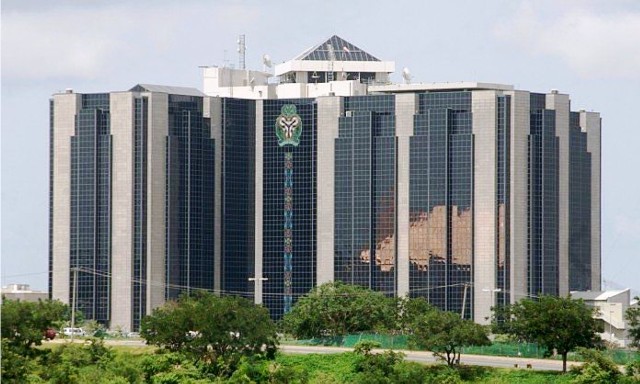Opinion
Alzaheimer’s Disease And The Aged
Alzheimer’s disease, named after the doctor who first described
it (Alois Alzheimer), is a physical disease that affects the brain. Alzheimer’s disease also known as (AD) is the most common cause of dementia. The word dementia describes a set of signs that can include memory loss and difficulties with thinking, problem-solving or language. These signs occur when the brain is damaged by certain diseases, including Alzheimer’s disease.
According to the World Health Organization (WHO) Alzheimer’s disease is the most common cause of dementia and may contribute to 60- 70% of cases, During the course of the disease, proteins build up in the brain structures called ‘plaques’ and ‘tangles’. This leads to the loss of connections between nerve cells, and eventually to the death of nerve cells and loss of brain tissue. People with Alzheimer’s also have a shortage of some important chemicals in their brain. These chemical messengers help to transmit signals around the brain. When there is a shortage of them, the signals are not transmitted as effectively as they should be.
In 2010, there were between 21 and 35 million people worldwide with AD. It most often begins in people over 65 years of age.
It affects about 6% of people 65 years and older. In 2010, dementia resulted in about 486,000 death in UK alone, In developed countries AD is one of the most financially costly diseases and the disease is now thought to be the third leading cause of death in the U.S., right behind heart disease and cancer.
The cause of Alzheimer’s disease is poorly understood. About 70% of the risk is believed to be genetic with many genes usually involved. Other risk factors include a history of head injuries, depression or hypertension. The disease process is associated with plaques and tangles in the brain . A probable diagnosis is based on the history of the illness and cognitive testing with medical imaging and blood tests to rule out other possible causes.
However age is the greatest risk factor for Alzheimer’s. The disease mainly affects people over 65 years and above. A person’s risk of developing Alzheimer’s disease doubles approximately every five years. One in six people over 80 have dementia.
Many people fear that the disease may be passed down to them from a parent or grandparent. Scientists are investigating the genetic background to Alzheimer’s. There are a few families with a very clear inheritance of Alzheimer’s from one generation to the next. In such families the dementia tends to develop well before age 65. However, Alzheimer’s disease that is so strongly inherited is extremely rare. But then still there is no definite cause of Alzheimer’s Alzheimer’s has three stages with different symptoms. In the early stage of Alzheimerils . The first symptoms are often mistakenly attributed to ageing or stress people with AD, have increasing impairment of learning and memory eventually leads to a definitive diagnosis. In a small percentage, difficulties with language, executive functions, perception (agnosia), or execution of movements (apraxia) are more prominent than memory problems.AD does not affect all memory capacities equally. Older memories of the person’s life ( episodic memory), facts learned ( semantic memory), and implicit memory (the memory of the body on how to do things, such as using a fork to eat) are affected to a lesser degree than new facts or memories. Language problems are mainly characterized by a shrinking vocabulary and decreased word fluency , leading to a general impoverishment of oral and written language. In this stage, the person with Alzheimer’s is usually capable of communicating basic ideas adequately. While performing fine motor tasks such as writing, drawing or dressing, certain movement coordination and planning difficulties (apraxia) may be present, but they are commonly unnoticed. As the disease’ progresses, people with AD can often continue to perform many tasks independently, but may need assistance or supervision with the most cognitively demanding activities.
In the second stage Progressive deterioration eventually hinders independence, with subjects being unable to perform most common activities of daily living. Speech difficulties become evident due to an inability to recall vocabulary, which leads to frequent incorrect word substitutions (paraphasias ). Reading and writing skills are also progressively lost. Complex motor sequences become less coordinated as time passes and AD progresses, so the risk of falling increases. During this phase, memory problems worsen, and the person may fail to recognise close relatives. Long-term memory, which was previously intact, becomes impaired. Behavioral and neuropsychiatric changes become more prevalent. Common manifestations are wandering” and irritability leading to crying, outbursts of unpremeditated aggression, or resistance to caregiving. Sundowning can also appear. Approximately 30% of people with AD develop illusionary misidentifications and other delusional symptoms. Subjects also lose insight of their disease process and limitations (anosognosia). Urinary incontinence can develop. These symptoms create stress for relatives and careers, which can be reduced by moving the person from home care to other long-term care facilities.
During the final stages, the patient is completely dependent upon caregivers. Language is reduced to simple phrases or even single words, eventually leading to complete loss of speech. Despite the loss of verbal language abilities, people can often understand and return emotional signals. Although aggressiveness can still be present, extreme apathy and exhaustion are much more common symptoms. People with Alzheimer’s disease will ultimately not be able to perform even the simplest tasks independently; muscle mass and mobility deteriorate to the point where they are bedridden and unable to feed themselves. The cause of death is usually an external factor, such as infection of pressure ulcers or pneumonia, not the disease itself.
The National Institute of Neurological and Communicative Disorders and Stroke (NINCDS) and the Alzheimer’s Disease and Related Disorders Association (ADRDA, now known as the Alzheimer’s Association, say there is no cure for AIzaheimer’s. Since Alzheimer’s has no cure and it gradually renders people incapable of tending for their own needs, care giving essentially is the treatment and must be carefully managed over the course of the disease.During the early and moderate stages, modifications to the living environment and lifestyle can increase patient’s safety and reduce caretaker burden.
However, Lead researcher Dr, Shannon Macauley said: “Our results suggest diabetes, or other conditions that make it hard to control blood sugar levels, can have harmful effects on brain function and exacerbate neurological conditions such as Alzheimer’s disease. The link we have discovered could lead us to future treatment targets that reduce these effects.” A sensible diet; not getting fat; exercise; staying mentally active and engaged; don’t smoke; avoid sweets may help reduce the risk of contacting Alzheimer’s.”
As Alzheimer’s disease is highly prevalent, many notable people have developed it. Well- known examples are former United States President Ronald Reagan and Irish writer Iris Murdoch , both of whom were the subjects of scientific articles examining how their cognitive capacities deteriorated with the disease.
Other cases include the retired footballer Ferenc Puskas, the former Prime Ministers Harold Wilson (United Kingdom) and Adolfo Suarez ( Spain ), the actress Rita Hayworth, the actor Charlton Heston , the novelist Terry Pratchett ,the author Harnett Kane was stricken in his middle fifties and unable to write for the last seventeen years of his life, Indian politician George Fernandes , and the 2009 Nobel Prize in Physics recipient Charles K. Kao.
The global voice on dimentia declared September 2015 to mark the fourth global World Alzheimer’s Month, an international campaign to raise awareness and challenge the stigma. The theme for World Alzheimer’s Month 2015 is: Remember Me. They are encouraging people ‘all around the world to learn to spot the signs of dementia, but also not to forget about loved ones who are living with dementia, or those who may have passed away. The impact of September’s campaign is growing, but the stigmatisation and misinformation that surrounds dementia remains a global problem. At the beginning of September, ADI will launch the annual World Alzheimer Report.
Meanwhile, Alzheimer’s disease has proven a lot of changes on the lives of the human being and the numerous changes it cause on the humanity regarding its harmfulness. Therefore, people of various ages should give maximum support to efforts at curtailing the spread of the deadly disease Alzheimer’s. Remember it could be our grandparents, our parents or even ourselves. So it behoves us all to create awareness, spot the signs, love, care, and support our elders because tomorrow might never come. All we have is today.
Tom is of the Mass Communication Department, University of Maiduguri.
Adama Jibrin Tom
Opinion
Ndifon’s Verdict and University Power Reform

Opinion
As Nigeria’s Insecurity Rings Alarm

Opinion
The Girl Who Didn’t Dance
-
Business2 days ago
Shippers Council Vows Commitment To Security At Nigerian Ports
-

 Business2 days ago
Business2 days agoNigeria Risks Talents Exodus In Oil And Gas Sector – PENGASSAN
-

 Business1 day ago
Business1 day agoCBN Revises Cash Withdrawal Rules January 2026, Ends Special Authorisation
-
Business2 days ago
NCDMB, Others Task Youths On Skills Acquisition, Peace
-

 Business1 day ago
Business1 day agoFIRS Clarifies New Tax Laws, Debunks Levy Misconceptions
-

 News1 day ago
News1 day agoTinubu Swears In Christopher Musa As Defence Minister
-

 Women2 days ago
Women2 days agoRIVERS NAWOJ AND PHACCIMA PARTNER TO STRENGTHEN MUTUAL GOALS
-

 Politics1 day ago
Politics1 day agoTinubu Increases Ambassador-nominees to 65, Seeks Senate’s Confirmation

